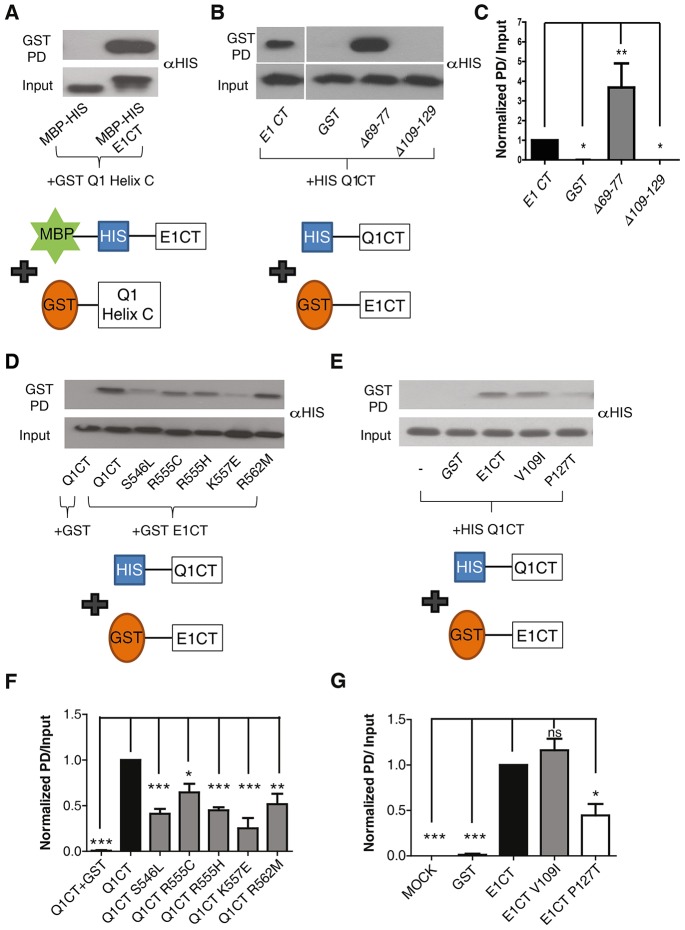Fig. 2.
LQT1 and LQT5 mutations disrupt the interaction between KCNQ1 helix C and KCNE1 C-terminus. (A) Representative immunoblot of GST pulldown (GST PD) (upper row) of the His-MBP-tagged KCNE1 C-terminus (residues 67–129, E1CT in diagram) or control His-MBP peptide, by GST-tagged KCNQ1 helix C (residues 535–572, Q1 Helix C, in diagram), illustrating the direct interaction of KCNE1 C-terminus with KCNQ1 helix C (n = 4). Equal amounts of His-MBP and His-MBP-tagged KCNE1 were used, as seen in the input (lower row). (B) Representative immunoblot of GST pulldown (upper row) of the His-tagged WT KCNQ1 C-terminus (residues 352–622 Δ396–504, Q1CT in diagram) by GST-tagged KCNE1 C-terminus deletion mutants (E1CT in diagram). Inputs are shown in the lower row. (C) Quantification of the pulldowns normalized to input (n = 5). *P<0.05, **P<0.01. (D) Representative immunoblot of GST pulldown (upper row) of the His-tagged WT KCNQ1 C-terminus (residues 352–622 Δ396–504) or LQT1 mutants by GST-tagged KCNE1 C-terminus (77–129). Inputs are shown in the lower row. (E) Representative immunoblot of GST pull-down (upper row) of His-tagged WT KCNQ1 C-terminus (residues 352–622 Δ396–504) by GST-tagged WT KCNE1 C-terminus (residues 67–129) or LQT5 mutants. Inputs are shown in the lower row. (F,G) Quantification of the pulldown shown in D and E, respectively, and normalized to input (n = 3–5). *P<0.05; **P<0.01; ***P<0.001.

